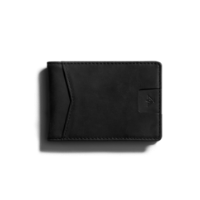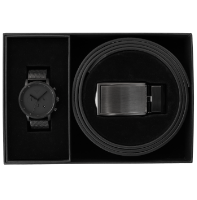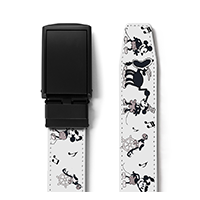THE LOOP
Sneaky Ways to Exercise With a Busy Schedule
Despite our best efforts and good intentions, many of us still struggle to get up and move. But before we start pointing any fingers, it should be noted that this is not entirely our fault. Research suggests that humans are actually hard-wired to rest as much as possible. In other words, we prefer to be comfortable.
If you have a hectic schedule, just the idea of packing a gym bag, dragging yourself to the gym, working out, and trekking back home can seem overwhelming (and exhausting!). Luckily, we have some simple and creative exercises that can be done just about anywhere and anytime.
But first, there are a few basics to cover about exercise...
Why Exercise?
It is true that there are some serious benefits to working out. In fact, studies suggest that regular exercise can help to improve your focus, productivity, and self-confidence. That’s not all though. Studies also show that regular exercise can help to boost your energy levels (even more than a daily cup of coffee!).
So How Much Exercise Do We Really Need?
According to experts, a minimum of 150 minutes a week (approximately 20 minutes a day) of moderate-intensity aerobic activity are recommended for the average adult. Experts also suggest strength-training, that specifically works the major muscle groups (e.g., chest, back, arms, shoulders, abdominals, and legs), for at least two days a week.
For us busy bees, however, fitting that time in is easier said than done. Given that the average worker spends approximately 2,400 minutes per week at the office (or home office), it is easy to see why six out of ten individuals cannot manage their time to do regular exercise. With that being said, some of these minutes can be spent doing double-duty.
Leisure Activities Equivalent to Exercising
There are plenty of ways to workout without taking up too much of your free time. As a matter of fact, many exercises can be combined with your daily and leisure activities! Below are just a few ideas:
- Use the stairs instead of the elevator
- Join a sports co-op team with friends or family (e.g., football, volleyball, or soccer)
- Propose a hiking trip with friends or family
- Do squats while waiting for the oven to preheat
- Wear a smartwatch to set reminders (e.g., to stretch, take a walk, or practice yoga) and to track your stats (e.g., activity, nutrition, and calories burned); this data could also help motivate you to reach your fitness goals faster
Exercise While at Work
Even if you are stuck to a desk for most of your workday, you do not necessarily need to sit still. Here are some ways to move your body while at the office:
- Use hand weights, hand grippers, resistance bands, balance balls, or mini elliptical devices at your desk (yes, you can even use these while reading emails!)
- Try standing at your desk for 20-30 minute intervals (electric, height-adjustable desks allow you to easily transition between standing and sitting)
- Take a quick stretch break (try neck rolls, torso twists, or chair yoga poses)
- Try sculpting your calves with calf raises (this can be done while printing, faxing, or scanning documents)
- Use part of your lunchtime for a brief walk (feel free to bring along your running shoes)
The Takeaway
Indeed, keeping fit can sometimes be an uphill battle. With everything competing for your time and attention, it may be difficult to make exercising a top priority. However, there are ways to stay in tip-top shape without having to hit the gym. Arguably, the opportunities to exercise are endless. All you need to do is find (and take advantage of) them!
References
ESI (2017). 8 Ways to Exercise at Work. Wellness.
Everyday Health Editors (2015). 13 Easy Ways to Sneak Exercise Into Your Day. Everyday Health.
Fitness At Home (n.d.). Health and Fitness advise for busy people.
Golen, T. (2021). Does exercise really boost energy levels? Harvard Health Publishing.
Healthline (2020). What Muscle Groups Are Best to Work Out Together?
Hokosoko-Indian Online Shopping Hub (2020). 6 Health And Fitness Tips For Busy People. Medium.
Lieberman, B. (2015). 50 Shades of Glutes: Chair & Band Exercises. SELF.
Luke Bremner Fitness (2020). 5 Time-Efficient Ways Busy People Can Improve Their Health.
Olaru, M. (n.d.). Top 10 Health And Fitness Tips for Busy People. AlignThoughts.
Pandita, R. (2019). How Fitness Can Ensure Smooth Entrepreneurial Journey. Entrepreneur Media.
Realbuzz Team (n.d.). 10 Health And Fitness Tips For Busy People. The Realbuzz Foundation.
Roach, A. (2018). Here’s Why Successful Entrepreneurs Exercise Regularly. Oberlo.
Stillman, J. (2016). The Scientific Reason It's So Hard to Make Yourself Go to the Gym. Inc.com.
Wall Street (2019). Health and Fitness For Busy People. WallStreet.com.
Watch Ranker (n.d.). 12 Smartwatch Pros & Cons – Advantages and Disadvantages. Watchranker.com.
Packing Like a Pro: How to Make the Most of Your Suitcase
While packing a suitcase may seem simple enough, there are actually a number of ways to go about it. In fact, how a person packs can depend on his or her itinerary, budget, and destination. However, according to travel industry experts, some packing strategies are better than others. With that being said, here are a few of the top tips and methods for packing efficiently and effectively.
Choosing the Right Bag
It is important to keep in mind that the “right” bag is different for everyone and for every trip. Whereas a bag may be appropriate for one trip, it may be troublesome and bulky for another. If your bag doesn’t fit your needs, you could be sabotaging your trip from the start. Fortunately, there are many types of luggage available - backpacks, satchels, totes, weekenders, duffels, and rolling suitcases, just to name a few.
Always keep airline size and weight limits in mind when choosing your bag(s). This is especially crucial, given that suitcases can vary widely in price, size, material (e.g., hard or soft shell), and design (e.g., two vs. four wheels). Remember, every pound counts! To save space, avoid bags with a lot of interior compartments or features. Instead, opt for bags that expand or have exterior pockets.
Bear in mind that you do not need a big collection of luggage to travel. This is often excessive and expensive. Instead, stick to a few reliable pieces that you can use over and over again. For the frequent traveler, a sturdy bag with a generous warranty is likely to withstand years of wear-and-tear. For the occasional traveler, a mid-range bag with a limited warranty may be more suitable.
Determining What to Pack
After selecting a bag to use, the next step is to decide what items should be put inside it. If you are unsure of where to start, consider practicing the 1-2-3-4-5-6 rule. This is the simplest packing tip to follow and covers a week’s worth of outfits. Here’s what to pack:
- 1 hat
- 2 pairs of shoes
- 3 pairs of pants, shorts, or skirts
- 4 shirts
- 5 pairs of socks
- 6 sets of underwear
Of course, this list can be modified to match both your needs and the duration of the trip. Do not hesitate to throw in a swimsuit, jacket, or dress if the trip calls for it. However, be careful not to fall into the ‘just in case I need it’ trap. This could lead to an overstuffed bag that will be tricky to repack once it’s time to head home.
Bonus Tip: If you still find yourself overpacking, try choosing interchangeable and multitasking pieces that can be worn multiple ways. Not only will this provide you the versatility to mix and match items, but it will also allow you to create more outfits with less.
How to Pack: Tried and True Methods
While everyone has their own ‘packing personality’, packing should always be an easy, organized, and stress-free activity. Below are a few of the best packing methods to maximize space, keep things clean, and cut down on wrinkles.
The Rolling Method (No Rubber Bands Necessary)
Yes, travelers do swear by this method! Rolling your clothes not only helps you to fit more into your bag, but it also helps to reduce wrinkles. This method is particularly effective for softer and casual garments such as jeans, cotton pants, t-shirts, knitwear and sweaters. When rolled tightly, these items are less likely to wrinkle.
The Cube Method
If using a larger bag or suitcase, packing cubes can help you to keep things organized and easy to access. Not only are they conveniently shaped, allowing you to pack without wasting space in between, but they can separate different types of clothing and toiletries (perfect for partners sharing a suitcase).
Separating Dirty Laundry
To prevent mixing soiled and clean clothing, simply use a separate bag for laundry (e.g., drawstring pouches, compression bags, or resealable plastic bags). Forgot to bring one? Check your hotel room for any unused trash bags (these are simple and free to use).
Bonus Tip: I have found that plastic bags also work well for keeping shoes, along with accompanying dirt and germs, apart from other (clean) belongings. If possible, set your shoes along the sides of your bag. Due to their odd shapes and heels, they will take up the most space.
The Takeaway
When it comes to packing a suitcase, there is no one-size-fits-all solution. In fact, there are a multitude of ways to do it! Just how effective these methods are, depends greatly on the types of items you pack.
With that being said, it is important to pick a method, or a combination of methods, that suit your needs and preferences. Although only a few methods have been mentioned here, there are many more worth trying. So if you haven’t already, book that trip and start packing!
References
Allianz Travel Insurance (n.d.). 12 Pro Tips for Packing Your Suitcase Smarter.
Briggs and Riley Travelware (2021). How to Pack a Suitcase: 5 of the Best Packing Methods We Stand Behind.
Mettler, L. (2019). How to Pack a Suitcase: 16 Tips and Expert Tricks for Perfectly Packed Luggage. U.S. News & World Report.
O’Rourke, T. (2019). Foolproof Hacks for Packing Your Suitcase Efficiently Every Time. Real Simple.
Our Travel Mix (n.d.). The Best Way to Pack a Suitcase to Maximize Space.
Peters, S. & Phillips, L. (2018). 5 Brilliant Items That Make Packing Easier. Real Simple.
Saporita, N. (2019). 14 Genius Packing Tips to Help You Travel Like a Pro. Good Housekeeping Institute.
Schlichter, S. (2018). How to Pack a Suitcase: The Ultimate Guide. Smarter Travel.
The GentleManual (2020). What Does Your Bag Say About You? Ties.com.
Vora, S. & Higgins, M. (n.d.). How to Pack a Suitcase. The New York Times.
Honest Brand Review
https://www.honestbrandreviews.com/reviews/slidebelts-review/
Excited to share this honest review! Great to see honest brand reviews taking a closer look at SlideBelts and giving an honest assessment of our products. Thanks HBR!








